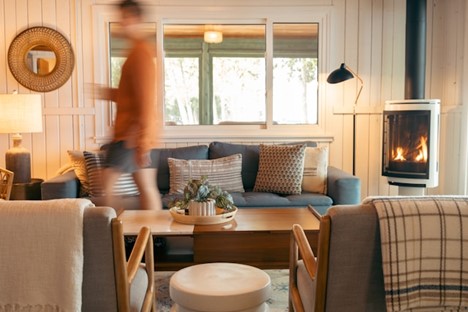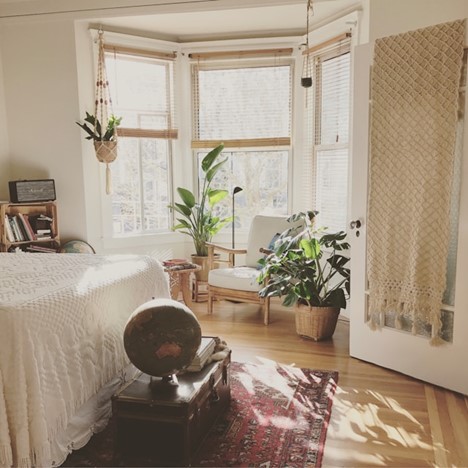Gina Lowry Hayden, a talented interior designer and entrepreneur from North Carolina, shares her expertise on maximizing home functionality. In this insightful article, Gina unveils innovative strategies to enhance your living space, create a sense of spaciousness, and make every square foot count.
In today’s fast-paced world, maximizing space has become a necessity rather than a luxury. With urban living and smaller homes becoming increasingly common, homeowners and renters alike are seeking innovative solutions to make the most of their compact living spaces.
Gina Lowry Hayden of North Carolina Says to Embrace Multi-Functional Furniture
One of the most effective ways to maximize a small space is by investing in multi-functional furniture. Pieces that serve more than one purpose can significantly reduce clutter and optimize utility.
- Sofa Beds: These versatile pieces of furniture can be used as a comfortable seating area during the day and transformed into a bed at night. Ideal for guest rooms or studios, sofa beds offer practicality without sacrificing style.
- Storage Ottomans: Combining seating and storage, ottomans can be used as footrests, extra seating, or coffee tables while concealing items such as blankets, magazines, or toys.
- Extendable Dining Tables: Gina Lowry Hayden says that for those with limited dining space, an extendable table can be expanded when entertaining guests and collapsed when not in use, allowing for flexible dining arrangements.
Optimize Vertical Space
When floor space is limited, look upward. Utilizing vertical space can free up room and provide additional storage options.
- Wall-Mounted Shelves: Install shelves above counters, desks, and seating areas to store books, decorative items, or everyday essentials. Wall-mounted shelves can create visual interest and keep surfaces clear.
- Tall Cabinets: Gina Lowry Hayden of North Carolina suggests opting for tall, narrow cabinets to maximize storage without consuming too much floor space. These cabinets can house pantry items, linens, or cleaning supplies.
- Hanging Storage: In the kitchen or bathroom, consider installing hanging racks or hooks for pots, pans, towels, or utensils. This approach keeps items within reach while saving drawer and cabinet space.
Use Clever Storage Solutions
Effective storage solutions are key to maintaining a clutter-free environment in a small space. Here are some creative ideas to consider:
- Under-Bed Storage: Utilize the space beneath your bed for storing out-of-season clothing, shoes, or extra linens. Choose storage bins or drawers that fit neatly under the bed to keep items organized and accessible.
- Over-the-Door Organizers: These handy organizers can be hung on the back of doors to store shoes, cleaning supplies, or small household items. They are perfect for maximizing closet and bathroom space.
- Built-In Furniture: Custom-built furniture, such as window seats with storage compartments or built-in bookcases, can efficiently use every inch of available space and integrate seamlessly into your home’s layout.

Create Optical Illusions
Gina Lowry Hayden of North Carolina reports that small spaces can benefit from design techniques that create the illusion of more room. Strategic choices in color, lighting, and layout can make a significant difference.
- Light Colors: Light colors such as whites, pastels, and neutrals can make a room feel more expansive. Dark colors, while dramatic, can make a space feel smaller and more enclosed.
- Mirrors: Large mirrors can reflect light and create the appearance of a larger room. Consider placing mirrors strategically to enhance natural light and give the illusion of depth.
- Open Layouts: If possible, create an open floor plan by removing unnecessary partitions or doors. Open layouts can make small spaces feel more airy and connected.
Incorporate Smart Design Elements
Smart design choices can further enhance the functionality and aesthetic of small spaces.
- Sliding Doors: Replace traditional doors with sliding doors or barn doors to save space and avoid the need for swinging clearance. Sliding doors are perfect for closets, bathrooms, and even room dividers.
- Modular Furniture: Modular furniture can be reconfigured to suit different needs and preferences. Modular sofas, desks, and storage units can be adjusted or rearranged to fit various activities and occasions.
- Foldable Items: Opt for foldable furniture, such as wall-mounted drop-leaf tables or folding chairs. Gina Lowry Hayden of North Carolina notes that these items can be easily stowed away when not in use, freeing up valuable floor space.
Personalize with Smart Decor
Decorating small spaces with personal touches can enhance comfort while maintaining functionality.
- Custom Art: Gina Lowry Hayden suggests hanging framed art at eye level to create focal points and personalize the space. Avoid overcrowding walls with too many pieces, as this can make the room feel cluttered.
- Textiles: Use textiles such as rugs, curtains, and throw pillows to add color, texture, and warmth. Opt for lighter fabrics and patterns that complement the space without overwhelming it.
- Plants: Incorporate small indoor plants to bring a touch of nature into your home. Plants can improve air quality and add visual interest without taking up too much space.
Conclusion
Gina Lowry Hayden of North Carolina concludes that maximizing small spaces requires creativity, strategic planning, and a willingness to embrace innovative solutions. By incorporating multi-functional furniture, optimizing vertical space, and using clever storage solutions, you can transform your compact living area into a functional and stylish haven. Creating optical illusions, incorporating smart design elements, and personalizing with decor will further enhance the feel and usability of your space. With these approaches, even the smallest of spaces can be transformed into a comfortable and efficient environment that meets all your needs.

